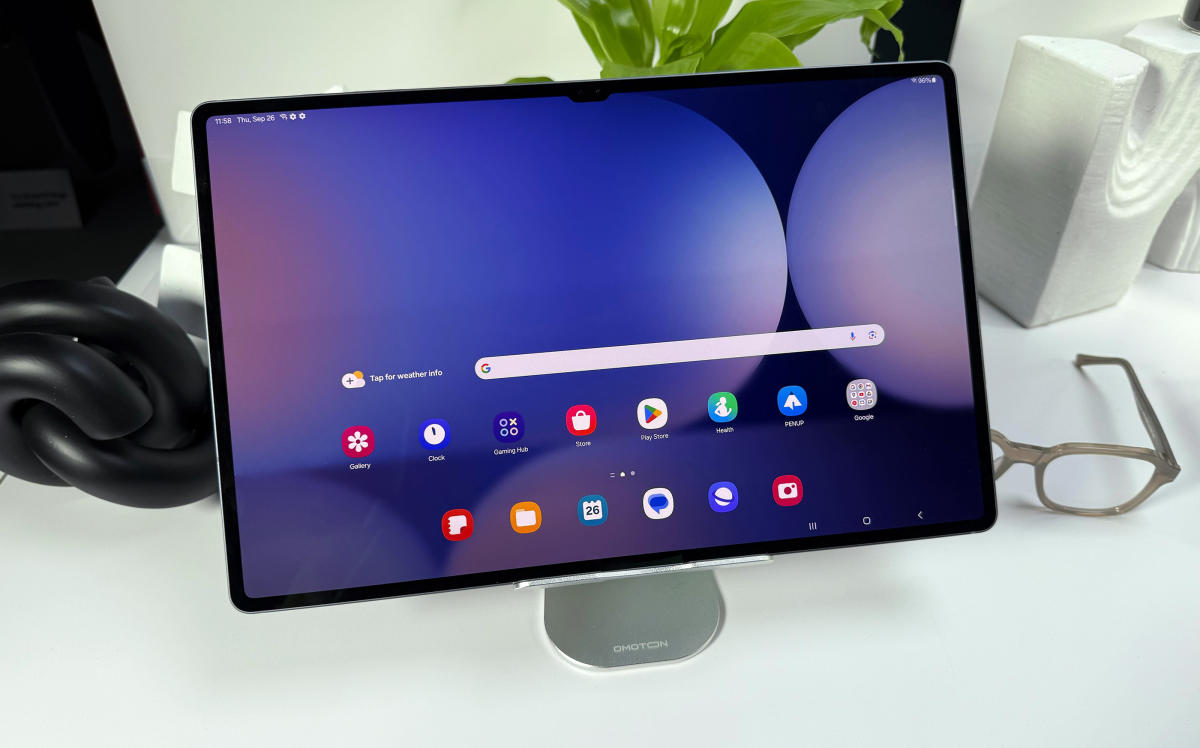In a surprise 30-minute event today that could have been an email, Samsung unveiled new additions to its portfolio of devices this year, including the Galaxy S24 FE and the Galaxy Watch FE LTE. The highlight of today’s news has to be the new Galaxy Tab S10 tablets, though, since they’ve long been regarded as the best premium Android tablets around. The Galaxy Tab S10+ and Tab S10 Ultra start at $1,000 and $1,200 respectively (the same price as the iPhone 16 Pro and Pro Max) and are available for pre-order today before they retail on October 3.
With the Tab S10 series, Samsung proclaims it has brought its Galaxy AI to the category, thus making AI available for all. Features introduced on its flagship S24 phones earlier this year like Circle to Search and Sketch to Image are now supported on the tablets, and those that worked with the S Pen on the S24 Ultra, like Handwriting Assist and Note Assist, are here too. I spent some time with the new hardware and, though it’s too early to tell if these updates work well, I can still say these are probably going to remain the best Android tablets around.
When I picked up a Galaxy Tab S10 Ultra at Samsung’s event today, I once again marveled at how thin and light it was, despite having already experienced the same feelings with all of Samsung’s previous tablets. To recap, the Tab S10 Ultra has a 14.6-inch screen, while the Tab S10+ comes in at 12.4 inches. Both these AMOLED panels have anti-reflective finishes, and the devices are rated IP68 for durability, despite being so satisfyingly slim. They feel like blades you could potentially use to slice very soft sponge cakes with.
I was able to pick up a Tab S10 Ultra with very little effort or muscle strain, and though it’s usually difficult to maneuver such a wide screen, the fact that I could easily wield it with one hand made things easier.
There’s not much that’s changed compared to the Galaxy Tab S9, other than that the S10 series uses MediaTek’s Dimensity 9300+ processors, instead of Qualcomm’s Snapdragon chips. I’m not convinced that these chips have the power or energy efficiency to multitask or execute AI tasks efficiently, but that’s not something I can determine at a hands-on event.
Samsung’s AMOLED panels remain vibrant and bright, providing excellent media consumption experiences. It was hard to gauge how effective the anti-reflective treatment was under the harsh lights set up for the event, but for the most part I found things easy to see.
And though I didn’t linger too long on any of the Galaxy AI features on the Tab S10 series, I can tell you I’ve had fun playing with the very same tools on the S24 flagships we’ve reviewed throughout the year. Whether it’s the S24 Ultra with an S Pen or the Z Fold 6 and Z Flip 6, Samsung’s slate of hardware this year have all received the Galaxy AI suite of writing and photo editing tools. We’ve already had time to ruminate how useful any of these things really are in the real world, and in general our impressions have been a resounding “meh.”
I have been impressed with how Sketch to Image has been able to transform crappy drawings of animals into realistic looking beasts in photos, and Circle to Search is a Google tool that makes it easier to look up items by drawing a ring around them. Many of the other Galaxy AI features, like most generative AI tools today, are only moderately helpful.
We’ll need to spend more time with the Tab S10 Ultra, Tab S10+, Galaxy S24 FE and even the Galaxy Watch FE LTE to determine if they’re worth spending your money on. But for now, I have to admit that it’s nice to see Samsung roll out all its Galaxy AI features across its lineup, resulting in a sense of cohesion and parity even in its lower cost offerings. Apple Intelligence, meanwhile, will require an iPhone 15 Pro, iPhone 16 or iPhone 16 Pro, and won’t work if you only have an iPhone 15. It’s clear we’re deep into the generative AI age, and will not be able to avoid them much longer, especially now that they’re getting more prevalent across the Android ecosystem.

